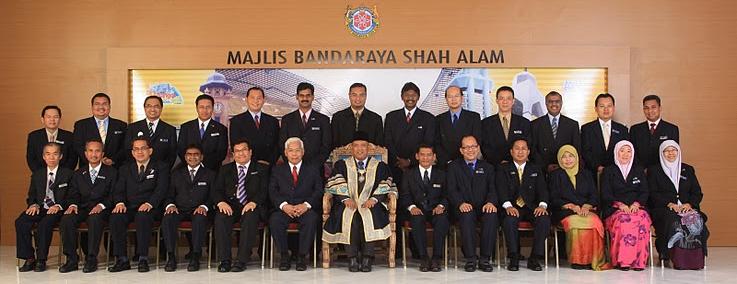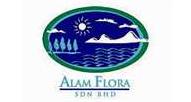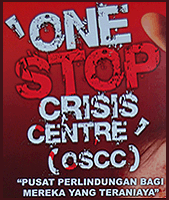SHAH Alam’s skyline is slowly but surely changing.In the past, this planned and landscaped city used to be known as a quiet and boring place. But, with the passage of time, it is steadily turning out to be a happening place by its own standards.The Shah Alam skyline, especially around its city centre which once boasted only the PKNS Complex, has undergone rapid change in recent years.Back in the 1950s and 60s, the area was known as the Sungai Renggam Estate until it became Shah Alam in the 70s.
But, with the passage of time, it is steadily turning out to be a happening place by its own standards.The Shah Alam skyline, especially around its city centre which once boasted only the PKNS Complex, has undergone rapid change in recent years.Back in the 1950s and 60s, the area was known as the Sungai Renggam Estate until it became Shah Alam in the 70s.
 But, with the passage of time, it is steadily turning out to be a happening place by its own standards.The Shah Alam skyline, especially around its city centre which once boasted only the PKNS Complex, has undergone rapid change in recent years.Back in the 1950s and 60s, the area was known as the Sungai Renggam Estate until it became Shah Alam in the 70s.
But, with the passage of time, it is steadily turning out to be a happening place by its own standards.The Shah Alam skyline, especially around its city centre which once boasted only the PKNS Complex, has undergone rapid change in recent years.Back in the 1950s and 60s, the area was known as the Sungai Renggam Estate until it became Shah Alam in the 70s.At that time, the town was known only for its industrial activities as many multinational companies set up factories there.

Development of the city started in the southern part, where the industrial estate is housed in Section 15. On its heels came medium, low-medium and low-cost housing development to house the factory workers.The northern part housed government quarters and housing for the low-medium class and above. The PKNS Complex in Section 4 was the landmark in this part of Shah Alam.The complex, which housed several government departments and had retail outlets on its ground floor, was the only venue in Shah Alam where the residents could shop.

I remember that in the mid-1990s, the complex would be deserted, with hardly a soul in the premises, after office hours.The country’s largest man-made lake, the Shah Alam Lake opposite the PKNS Complex, was the only attraction to speak of in the area.In the mid-80s, the State Secretariat building (Bangunan Sultan Salahuddin Abdul Aziz Shah) was built. Apart from establishing North Shah Alam as an administrative venue, the presence of the 22-storey building did little to change the landscape of the capital city.Later, Plaza Perangsang was completed and there was a lot excitement with international hotel chain Holiday Inn being one of the main tenants of the building.Not long after, the attractive State Mosque, also known as Sultan Salahuddin Abdul Aziz Shah Mosque, and Wisma MBSA were constructed not too far from Plaza Perangsang.The State Museum and State Library also came into the picture, while the Selangor Police Contingent building was built on a hill opposite the State Secretariat.
In line with its state capital status, Shah Alam also came to house the Ruler’s official palace, Istana Bukit Kayangan, in Section 7.The Shah Alam Club, formerly known as the Royal Shah Alam Club, is the other old landmark in the city.Kelab Golf Sultan Salahuddin Abdul Aziz Shah, the Batu Tiga Racing Circuit (which has since made way for housing development) and the Proton car assembly plant in Glenmarie are other older features of the city.However, all these new buildings did not do much to boost the image of Shah Alam, which continued to be known as an industrial and adminstrative hub of Selangor.However, more and more high-rise complexes have been built in the last five years.Apart from PKNS Complex, Plaza Masalam, located near Concorde Hotel, was the only shopping mall in the city.Then came Plaza Alam Sentral, next to Plaza Perangsang. In recent years, Plaza Shah Alam and Shah Alam City Centre have sprung up to provide more options for shoppers.The presence of the shopping complexes also offers residents and visitors a wide range of food outlets, including Western, Chinese, Japanese, Thai and local cuisines.With the presence of hypermarkets like Giant and Tesco, there seems to be no reason for the residents to venture beyond the city for their daily needs.Meanwhile, Shah Alam continued to be the focus of developers, with more and more medium- and large-scale developments being introduced.As a result of such efforts and to boost sports in the state, Stadium Shah Alam, costing more than RM300mil, was built together with the indoor stadium, as well as the Aquatic Centre, in the late 90s.Meanwhile, Concorde Hotel became the second international hotel to open in the city. Soon Grand Blue Wave and two state-owned hotels, Carlton Hotel and De Palma. also came up in the city.The city also took a new direction in the development of townships, with the involvement of more private developers, when previously, the Selangor State Development Corporation (PKNS) was the sole developer.With the rapid development around the fringes of Shah Alam, townships like Taman TTDI Jaya, Glenmarie, Bukit Rimau, Kota Kemuning, Setia Alam and Bukit Jelutong were created. These townships are self-contained and some of them even have their own clubhouses and golf courses.It certainly comes as a surprise that a planned city like Shah Alam is shedding its past image as a mere administrative city to become a highly developed commercial hub with a metropolitan setting.What the city needs now is a proper transit system and I hope thatm someday, Shah Alam would be connected to the rest of the Klang Valley via mass rapid transit.
But, one thing is for sure: I can foresee more surprises in store for its residents in the near future.
Articles extracted from THE STAR By ELAN PERUMAL.































































